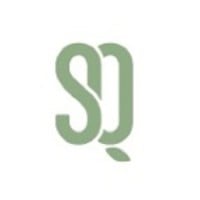
SQ Group Company Cyber Security Posture
sqgc.comQ Collection, based in Singapore, is the parent company of the manufacturing entities collectively known as SQ Group in Bangladesh. As a leading global apparel manufacturing conglomerate, SQ is driven by a passion for innovation, sustainability, and excellence. With a rich heritage spanning 30 years, we operate through three dynamic business clusters: SQ Celsius (Knitwear), SQ Birichina (Lingerie & Activewear), and SQ Hues (Vertical Integration). Our commitment to sustainability is reflected in our LEED-certified facilities and ESG-focused operations. Our team of over 18,000 dedicated employees deliver high-quality products and services, guided by Q Collection's strategic vision of excellence and commitment to shaping the future of apparel manufacturing.
SQ Group Company Details
sq-group
10,001+ employees
87843
none
Apparel & Fashion
sqgc.com
Scan still pending
SQ _3081487
In-progress
Between 200 and 800
This score is AI-generated and less favored by cyber insurers, who prefer the TPRM score.
 SQ Group Global Score
SQ Group Global Score.png)

SQ Group Company Scoring based on AI Models
| Model Name | Date | Description | Current Score Difference | Score |
|---|---|---|---|---|
| AVERAGE-Industry | 03-12-2025 | This score represents the average cybersecurity rating of companies already scanned within the same industry. It provides a benchmark to compare an individual company's security posture against its industry peers. | N/A | Between 200 and 800 |
SQ Group Company Cyber Security News & History
| Entity | Type | Severity | Impact | Seen | Url ID | Details | View |
|---|
SQ Group Company Subsidiaries

Q Collection, based in Singapore, is the parent company of the manufacturing entities collectively known as SQ Group in Bangladesh. As a leading global apparel manufacturing conglomerate, SQ is driven by a passion for innovation, sustainability, and excellence. With a rich heritage spanning 30 years, we operate through three dynamic business clusters: SQ Celsius (Knitwear), SQ Birichina (Lingerie & Activewear), and SQ Hues (Vertical Integration). Our commitment to sustainability is reflected in our LEED-certified facilities and ESG-focused operations. Our team of over 18,000 dedicated employees deliver high-quality products and services, guided by Q Collection's strategic vision of excellence and commitment to shaping the future of apparel manufacturing.
Access Data Using Our API

Get company history
.png)
SQ Group Cyber Security News
Cybersecurity company CrowdStrike moving its 'strategic technology hub' into new Redmond space
CrowdStrike is moving into new office space in Redmond, Wash., the cybersecurity software company confirmed on Wednesday. The company is ...
Research device company to relocate local office to Bellevue
Cytek Biosciences Inc. is relocating from Seattle to Bellevue in 2026. · The new 30,377-square-foot office will house labs and testing areas.
Cybercrime group 'Play' reportedly targeted Evansville-based company
EVANSVILLE — A cyber criminal group reportedly targeted Evansville-based Anchor Industries with a ransomware attack late last month, ...
Thrive Receives Strategic Investment from Berkshire Partners and Court Square Capital Partners
Thrive (the Company), a provider of cybersecurity, cloud, and IT managed services, today announced that it has reached a definitive agreement for a strategic ...
Meta Awarded $167 Million in Damages From Israeli Cybersecurity Firm
Meta had sued the firm, NSO Group, for using its spyware to hack 1400 WhatsApp accounts belonging to journalists, dissidents and others.
Cybersecurity Has a Talent Shortage. Here’s How to Close the Gap
Cyber threats are increasing in severity, frequency, and creativity. New research shows how CISOs are shoring up their defenses—and where they ...
US Treasury Department imposes sanctions on Chinese company over Salt Typhoon hack
The U.S. Treasury Department on Friday imposed sanctions on alleged hacker Yin Kecheng and cybersecurity company Sichuan Juxinhe Network ...
Bessent to wind down hedge fund if confirmed at Treasury
Scott Bessent, President-elect Donald Trump's pick to run the U.S. Treasury Department, will resign from Key Square Group and divest ...
A comprehensive list of 2025 tech layoffs
A complete list of all the known layoffs in tech, from Big Tech to startups, broken down by month throughout 2024 and 2025.

SQ Group Similar Companies
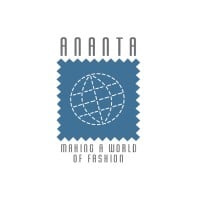
Ananta Companies
Ananta is an export oriented Woven- Ready Made Garment (RMG) and Leather finished product company. It is under the membership of the Bangladesh Garment Manufacturers and Exporters Association (BGMEA). The main products are trousers- jeans/spandex/cotton, shirts, unlined jackets, overall, shorts of a
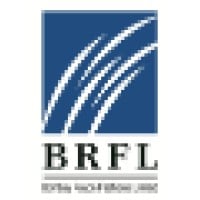
Bombay Rayon Fashions Limited
BRFL is a vertically integrated textile company, engaged in the manufacture of a wide range of fabrics and garments from state of the art production facilities. Apart from being the largest Shirt manufacturer in India, we have successfully evolved into a multi-fiber manufacturing company producing f
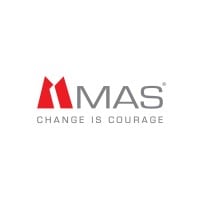
MAS Holdings
MAS is an innovation driven company founded on a perfect blend of daring and visionary thinking. Focusing on fashion and lifestyle, we are one of Asia’s largest manufacturers of intimate apparel, sportswear, performance wear and swimwear and provide IT solutions to the apparel and footwear industry
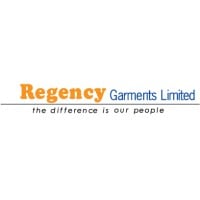
Regency Garments Limited
Regency is a Joint Venture multinational ready made apparel manufacturer owned by the Hirdramani Group of Companies (Sri Lanka) and L.T Apparels Ltd. (USA). Regency has 6 production facilities and a workforce of over 12,000. We are one of the top clothing companies based in Bangladesh and produce

BESTSELLER
At BESTSELLER, we are more than 22,000 people in 38 different countries working for over 20 fashion brands such as ONLY, JACK & JONES, VERO MODA, NAME IT, SELECTED, VILA, PIECES, OBJECT, MAMALICIOUS, NOISY MAY and Y.A.S. We are a family-owned company with a strong foundation and values to build on,

Frequently Asked Questions (FAQ) on Cybersecurity Incidents
SQ Group CyberSecurity History Information
Total Incidents: According to Rankiteo, SQ Group has faced 0 incidents in the past.
Incident Types: As of the current reporting period, SQ Group has not encountered any cybersecurity incidents.
Total Financial Loss: The total financial loss from these incidents is estimated to be {total_financial_loss}.
Cybersecurity Posture: The company's overall cybersecurity posture is described as Q Collection, based in Singapore, is the parent company of the manufacturing entities collectively known as SQ Group in Bangladesh. As a leading global apparel manufacturing conglomerate, SQ is driven by a passion for innovation, sustainability, and excellence. With a rich heritage spanning 30 years, we operate through three dynamic business clusters: SQ Celsius (Knitwear), SQ Birichina (Lingerie & Activewear), and SQ Hues (Vertical Integration). Our commitment to sustainability is reflected in our LEED-certified facilities and ESG-focused operations. Our team of over 18,000 dedicated employees deliver high-quality products and services, guided by Q Collection's strategic vision of excellence and commitment to shaping the future of apparel manufacturing..
Detection and Response: The company detects and responds to cybersecurity incidents through {description_of_detection_and_response_process}.
Incident Details
Incident 1: Ransomware Attack
Title: {Incident_Title}
Description: {Brief_description_of_the_incident}
Date Detected: {Detection_Date}
Date Publicly Disclosed: {Disclosure_Date}
Date Resolved: {Resolution_Date}
Type: {Type_of_Attack}
Attack Vector: {Attack_Vector}
Vulnerability Exploited: {Vulnerability}
Threat Actor: {Threat_Actor}
Motivation: {Motivation}
Incident 2: Data Breach
Title: {Incident_Title}
Description: {Brief_description_of_the_incident}
Date Detected: {Detection_Date}
Date Publicly Disclosed: {Disclosure_Date}
Date Resolved: {Resolution_Date}
Type: {Type_of_Attack}
Attack Vector: {Attack_Vector}
Vulnerability Exploited: {Vulnerability}
Threat Actor: {Threat_Actor}
Motivation: {Motivation}
Common Attack Types: As of now, the company has not encountered any reported incidents involving common cyberattacks.
Identification of Attack Vectors: The company identifies the attack vectors used in incidents through {description_of_identification_process}.
Impact of the Incidents
Incident 1: Ransomware Attack
Financial Loss: {Financial_Loss}
Data Compromised: {Data_Compromised}
Systems Affected: {Systems_Affected}
Downtime: {Downtime}
Operational Impact: {Operational_Impact}
Conversion Rate Impact: {Conversion_Rate_Impact}
Revenue Loss: {Revenue_Loss}
Customer Complaints: {Customer_Complaints}
Brand Reputation Impact: {Brand_Reputation_Impact}
Legal Liabilities: {Legal_Liabilities}
Identity Theft Risk: {Identity_Theft_Risk}
Payment Information Risk: {Payment_Information_Risk}
Incident 2: Data Breach
Financial Loss: {Financial_Loss}
Data Compromised: {Data_Compromised}
Systems Affected: {Systems_Affected}
Downtime: {Downtime}
Operational Impact: {Operational_Impact}
Conversion Rate Impact: {Conversion_Rate_Impact}
Revenue Loss: {Revenue_Loss}
Customer Complaints: {Customer_Complaints}
Brand Reputation Impact: {Brand_Reputation_Impact}
Legal Liabilities: {Legal_Liabilities}
Identity Theft Risk: {Identity_Theft_Risk}
Payment Information Risk: {Payment_Information_Risk}
Average Financial Loss: The average financial loss per incident is {average_financial_loss}.
Commonly Compromised Data Types: The types of data most commonly compromised in incidents are {list_of_commonly_compromised_data_types}.
Incident 1: Ransomware Attack
Entity Name: {Entity_Name}
Entity Type: {Entity_Type}
Industry: {Industry}
Location: {Location}
Size: {Size}
Customers Affected: {Customers_Affected}
Incident 2: Data Breach
Entity Name: {Entity_Name}
Entity Type: {Entity_Type}
Industry: {Industry}
Location: {Location}
Size: {Size}
Customers Affected: {Customers_Affected}
Response to the Incidents
Incident 1: Ransomware Attack
Incident Response Plan Activated: {Yes/No}
Third Party Assistance: {Yes/No}
Law Enforcement Notified: {Yes/No}
Containment Measures: {Containment_Measures}
Remediation Measures: {Remediation_Measures}
Recovery Measures: {Recovery_Measures}
Communication Strategy: {Communication_Strategy}
Adaptive Behavioral WAF: {Adaptive_Behavioral_WAF}
On-Demand Scrubbing Services: {On_Demand_Scrubbing_Services}
Network Segmentation: {Network_Segmentation}
Enhanced Monitoring: {Enhanced_Monitoring}
Incident 2: Data Breach
Incident Response Plan Activated: {Yes/No}
Third Party Assistance: {Yes/No}
Law Enforcement Notified: {Yes/No}
Containment Measures: {Containment_Measures}
Remediation Measures: {Remediation_Measures}
Recovery Measures: {Recovery_Measures}
Communication Strategy: {Communication_Strategy}
Adaptive Behavioral WAF: {Adaptive_Behavioral_WAF}
On-Demand Scrubbing Services: {On_Demand_Scrubbing_Services}
Network Segmentation: {Network_Segmentation}
Enhanced Monitoring: {Enhanced_Monitoring}
Incident Response Plan: The company's incident response plan is described as {description_of_incident_response_plan}.
Third-Party Assistance: The company involves third-party assistance in incident response through {description_of_third_party_involvement}.
Data Breach Information
Incident 2: Data Breach
Type of Data Compromised: {Type_of_Data}
Number of Records Exposed: {Number_of_Records}
Sensitivity of Data: {Sensitivity_of_Data}
Data Exfiltration: {Yes/No}
Data Encryption: {Yes/No}
File Types Exposed: {File_Types}
Personally Identifiable Information: {Yes/No}
Prevention of Data Exfiltration: The company takes the following measures to prevent data exfiltration: {description_of_prevention_measures}.
Handling of PII Incidents: The company handles incidents involving personally identifiable information (PII) through {description_of_handling_process}.
Ransomware Information
Incident 1: Ransomware Attack
Ransom Demanded: {Ransom_Amount}
Ransom Paid: {Ransom_Paid}
Ransomware Strain: {Ransomware_Strain}
Data Encryption: {Yes/No}
Data Exfiltration: {Yes/No}
Ransom Payment Policy: The company's policy on paying ransoms in ransomware incidents is described as {description_of_ransom_payment_policy}.
Data Recovery from Ransomware: The company recovers data encrypted by ransomware through {description_of_data_recovery_process}.
Regulatory Compliance
Incident 1: Ransomware Attack
Regulations Violated: {Regulations_Violated}
Fines Imposed: {Fines_Imposed}
Legal Actions: {Legal_Actions}
Regulatory Notifications: {Regulatory_Notifications}
Incident 2: Data Breach
Regulations Violated: {Regulations_Violated}
Fines Imposed: {Fines_Imposed}
Legal Actions: {Legal_Actions}
Regulatory Notifications: {Regulatory_Notifications}
Regulatory Frameworks: The company complies with the following regulatory frameworks regarding cybersecurity: {list_of_regulatory_frameworks}.
Ensuring Regulatory Compliance: The company ensures compliance with regulatory requirements through {description_of_compliance_measures}.
Lessons Learned and Recommendations
Incident 1: Ransomware Attack
Lessons Learned: {Lessons_Learned}
Incident 2: Data Breach
Lessons Learned: {Lessons_Learned}
Incident 1: Ransomware Attack
Recommendations: {Recommendations}
Incident 2: Data Breach
Recommendations: {Recommendations}
Key Lessons Learned: The key lessons learned from past incidents are {list_of_key_lessons_learned}.
Implemented Recommendations: The company has implemented the following recommendations to improve cybersecurity: {list_of_implemented_recommendations}.
References
Additional Resources: Stakeholders can find additional resources on cybersecurity best practices at {list_of_additional_resources}.
Investigation Status
Incident 1: Ransomware Attack
Investigation Status: {Investigation_Status}
Incident 2: Data Breach
Investigation Status: {Investigation_Status}
Communication of Investigation Status: The company communicates the status of incident investigations to stakeholders through {description_of_communication_process}.
Stakeholder and Customer Advisories
Incident 1: Ransomware Attack
Stakeholder Advisories: {Stakeholder_Advisories}
Customer Advisories: {Customer_Advisories}
Incident 2: Data Breach
Stakeholder Advisories: {Stakeholder_Advisories}
Customer Advisories: {Customer_Advisories}
Advisories Provided: The company provides the following advisories to stakeholders and customers following an incident: {description_of_advisories_provided}.
Initial Access Broker
Incident 1: Ransomware Attack
Entry Point: {Entry_Point}
Reconnaissance Period: {Reconnaissance_Period}
Backdoors Established: {Backdoors_Established}
High Value Targets: {High_Value_Targets}
Data Sold on Dark Web: {Yes/No}
Incident 2: Data Breach
Entry Point: {Entry_Point}
Reconnaissance Period: {Reconnaissance_Period}
Backdoors Established: {Backdoors_Established}
High Value Targets: {High_Value_Targets}
Data Sold on Dark Web: {Yes/No}
Monitoring and Mitigation of Initial Access Brokers: The company monitors and mitigates the activities of initial access brokers through {description_of_monitoring_and_mitigation_measures}.
Post-Incident Analysis
Incident 1: Ransomware Attack
Root Causes: {Root_Causes}
Corrective Actions: {Corrective_Actions}
Incident 2: Data Breach
Root Causes: {Root_Causes}
Corrective Actions: {Corrective_Actions}
Post-Incident Analysis Process: The company's process for conducting post-incident analysis is described as {description_of_post_incident_analysis_process}.
Corrective Actions Taken: The company has taken the following corrective actions based on post-incident analysis: {list_of_corrective_actions_taken}.
Additional Questions
General Information
Ransom Payment History: The company has {paid/not_paid} ransoms in the past.
Last Ransom Demanded: The amount of the last ransom demanded was {last_ransom_amount}.
Last Attacking Group: The attacking group in the last incident was {last_attacking_group}.
Incident Details
Most Recent Incident Detected: The most recent incident detected was on {most_recent_incident_detected_date}.
Most Recent Incident Publicly Disclosed: The most recent incident publicly disclosed was on {most_recent_incident_publicly_disclosed_date}.
Most Recent Incident Resolved: The most recent incident resolved was on {most_recent_incident_resolved_date}.
Impact of the Incidents
Highest Financial Loss: The highest financial loss from an incident was {highest_financial_loss}.
Most Significant Data Compromised: The most significant data compromised in an incident was {most_significant_data_compromised}.
Most Significant System Affected: The most significant system affected in an incident was {most_significant_system_affected}.
Response to the Incidents
Third-Party Assistance in Most Recent Incident: The third-party assistance involved in the most recent incident was {third_party_assistance_in_most_recent_incident}.
Containment Measures in Most Recent Incident: The containment measures taken in the most recent incident were {containment_measures_in_most_recent_incident}.
Data Breach Information
Most Sensitive Data Compromised: The most sensitive data compromised in a breach was {most_sensitive_data_compromised}.
Number of Records Exposed: The number of records exposed in the most significant breach was {number_of_records_exposed}.
Ransomware Information
Highest Ransom Demanded: The highest ransom demanded in a ransomware incident was {highest_ransom_demanded}.
Highest Ransom Paid: The highest ransom paid in a ransomware incident was {highest_ransom_paid}.
Regulatory Compliance
Highest Fine Imposed: The highest fine imposed for a regulatory violation was {highest_fine_imposed}.
Most Significant Legal Action: The most significant legal action taken for a regulatory violation was {most_significant_legal_action}.
Lessons Learned and Recommendations
Most Significant Lesson Learned: The most significant lesson learned from past incidents was {most_significant_lesson_learned}.
Most Significant Recommendation Implemented: The most significant recommendation implemented to improve cybersecurity was {most_significant_recommendation_implemented}.
References
Most Recent Source: The most recent source of information about an incident is {most_recent_source}.
Most Recent URL for Additional Resources: The most recent URL for additional resources on cybersecurity best practices is {most_recent_url}.
Investigation Status
Current Status of Most Recent Investigation: The current status of the most recent investigation is {current_status_of_most_recent_investigation}.
Stakeholder and Customer Advisories
Most Recent Stakeholder Advisory: The most recent stakeholder advisory issued was {most_recent_stakeholder_advisory}.
Most Recent Customer Advisory: The most recent customer advisory issued was {most_recent_customer_advisory}.
Initial Access Broker
Most Recent Entry Point: The most recent entry point used by an initial access broker was {most_recent_entry_point}.
Most Recent Reconnaissance Period: The most recent reconnaissance period for an incident was {most_recent_reconnaissance_period}.
Post-Incident Analysis
Most Significant Root Cause: The most significant root cause identified in post-incident analysis was {most_significant_root_cause}.
Most Significant Corrective Action: The most significant corrective action taken based on post-incident analysis was {most_significant_corrective_action}.
What Do We Measure?
















Every week, Rankiteo analyzes billions of signals to give organizations a sharper, faster view of emerging risks. With deeper, more actionable intelligence at their fingertips, security teams can outpace threat actors, respond instantly to Zero-Day attacks, and dramatically shrink their risk exposure window.
These are some of the factors we use to calculate the overall score:
Identify exposed access points, detect misconfigured SSL certificates, and uncover vulnerabilities across the network infrastructure.
Gain visibility into the software components used within an organization to detect vulnerabilities, manage risk, and ensure supply chain security.
Monitor and manage all IT assets and their configurations to ensure accurate, real-time visibility across the company's technology environment.
Leverage real-time insights on active threats, malware campaigns, and emerging vulnerabilities to proactively defend against evolving cyberattacks.




